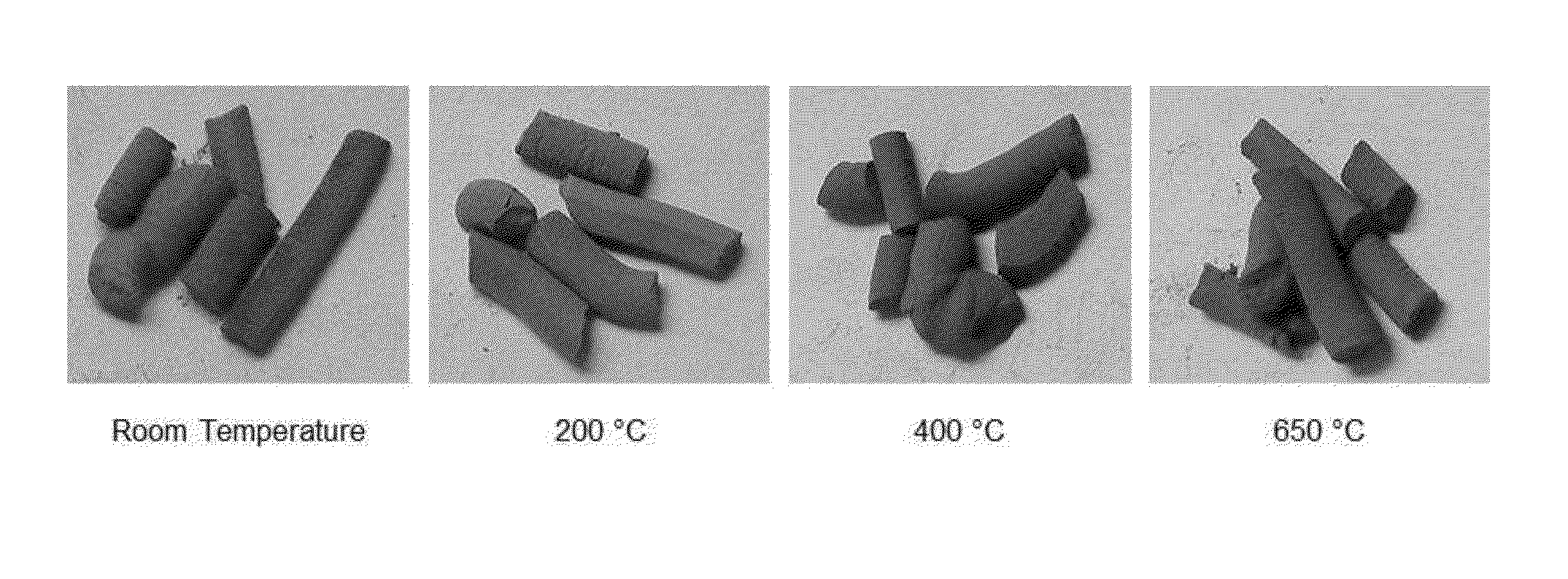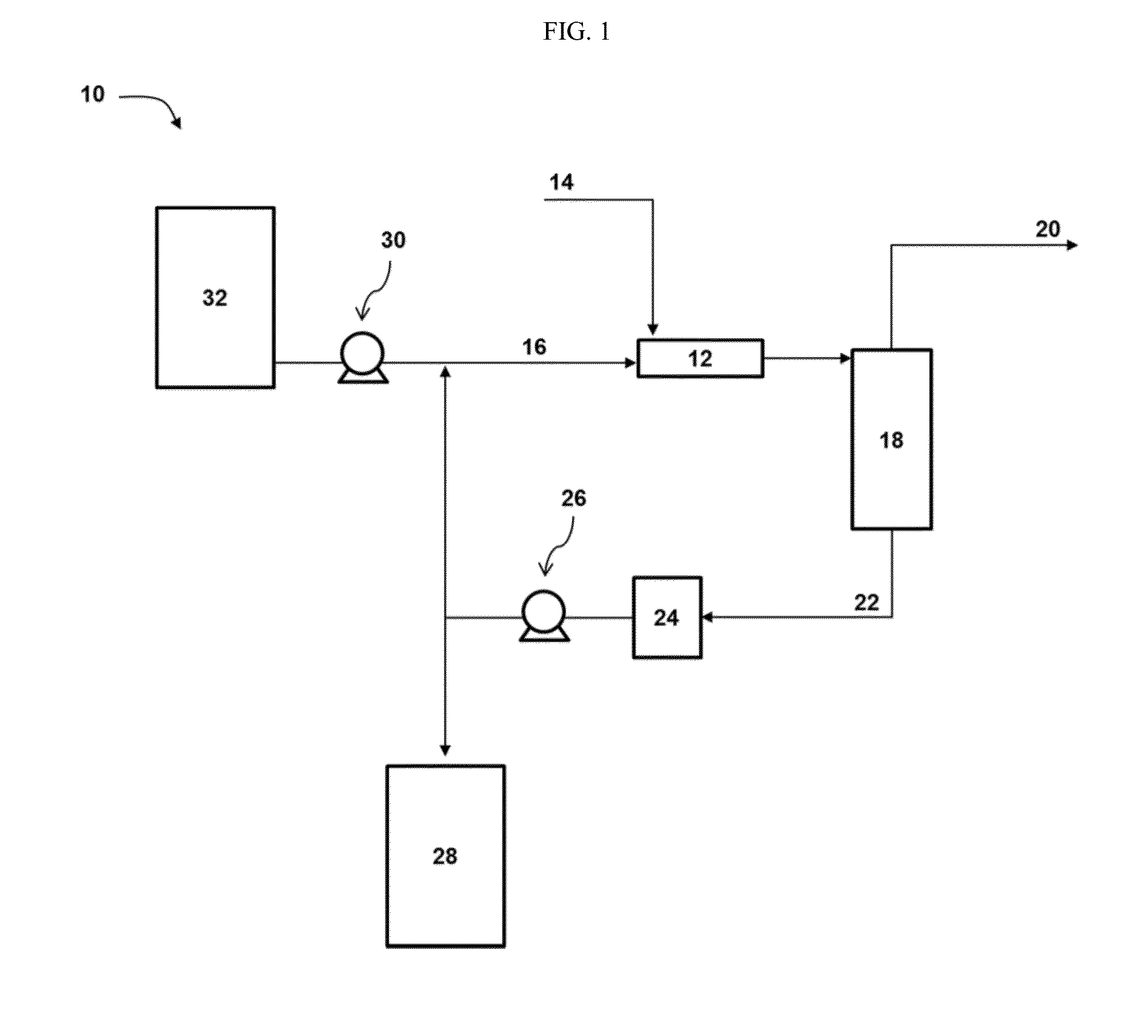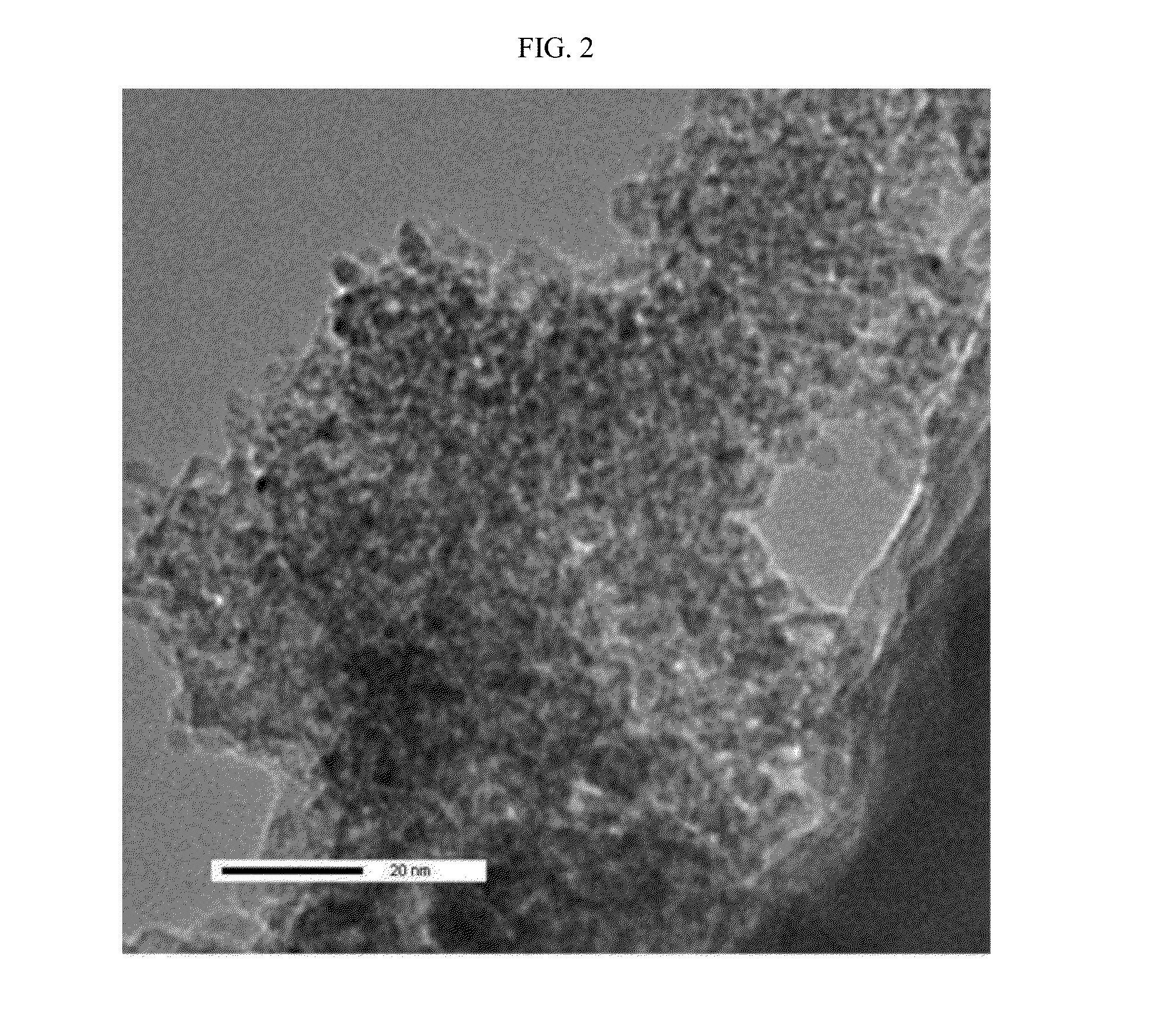Sulfided Iron (II) Compound and Method of Manufacture
- Summary
- Abstract
- Description
- Claims
- Application Information
AI Technical Summary
Benefits of technology
Problems solved by technology
Method used
Image
Examples
reference example 1
[0034]A blank caustic solution composed of 60 ml 1M KOH solution was introduced into a glass bubbler. The sample was at room temperature and atmospheric pressure. A flow of 20 standard cubic centimeters per minute (sccm) of 6000 parts per million (ppm) of H2S in a nitrogen (N2) carrier (6000 ppm of H2S / N2) was passed through the caustic solution in the bubbler. This results in a space velocity of 20 LHSV. The outlet gas was monitored by a gas chromatograph (GC) in order to quantify the amount of H2S that is absorbed. The blank was run for 76 hours before showing a breakthrough of H2S.
example 2
[0035]One gram of siderite (principally FeCO3) was suspended by agitation in 60 ml of a 1 M KOH solution using a magnetic stirrer and heated to 40-50° C. until the color of the solid particles turned from light brown to black. This took approximately 10-20 minutes. Upon cessation of agitation, the black particles precipitated to the bottom of the flask showing a clear liquid phase on top. Due to their magnetic nature, they also agglomerated around the magnetic stirrer bar when it was not being agitated. The resulting suspension was analyzed using transmission electron microscopy as shown in FIG. 2. This established that the particles were generally in the 5-10 nanometer range. This evidences that the large particles not only were reacted to stable iron (II) oxides and / or hydroxides, but that they were also disaggregated to form iron nanoparticles.
[0036]Ten milliliters of the resulting suspension were introduced into a glass bubbler containing the spent blank caustic solution from Ex...
example 3
[0041]A second addition of 10 ml of sorbent prepared in the same manner as set forth in Example 2 was added to the spent caustic solution in the bubbler after the breakthrough was reached in Example 2. 6000 ppm of H2S / N2 were again passed through the suspension in accordance with the procedure set forth in Reference Example 1 and the system started absorbing H2S again. It is important to notice that in this case the life of the sorbent was 10 hours before breakthrough, which is shorter than the first time. Consequently, it is believed that the molar ratio between OH− and Fe+2 should preferably be at least 4-6:1. Without being bound by theory, it is currently believed that this ratio allows for sufficient caustic to be able to convert the ferrous carbonate in the siderite to ferrous oxide / hydroxide as well as stabilize it so that it can then absorb H2S. If the ratio is lower, the caustic may be able to react the siderite but it might not show a long life in absorbing H2S. In addition...
PUM
| Property | Measurement | Unit |
|---|---|---|
| Particle size | aaaaa | aaaaa |
| Particle size | aaaaa | aaaaa |
| Temperature | aaaaa | aaaaa |
Abstract
Description
Claims
Application Information
 Login to View More
Login to View More - R&D
- Intellectual Property
- Life Sciences
- Materials
- Tech Scout
- Unparalleled Data Quality
- Higher Quality Content
- 60% Fewer Hallucinations
Browse by: Latest US Patents, China's latest patents, Technical Efficacy Thesaurus, Application Domain, Technology Topic, Popular Technical Reports.
© 2025 PatSnap. All rights reserved.Legal|Privacy policy|Modern Slavery Act Transparency Statement|Sitemap|About US| Contact US: help@patsnap.com



